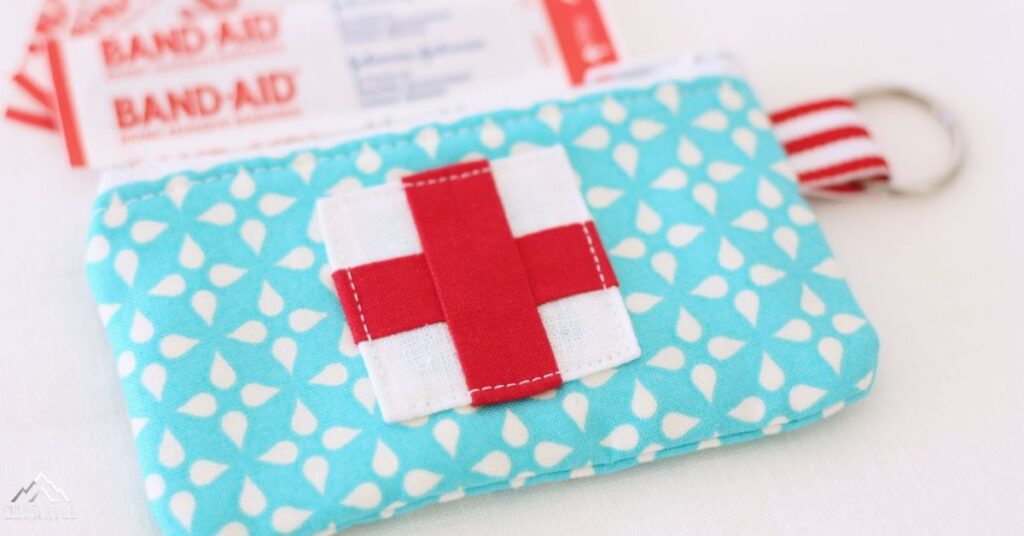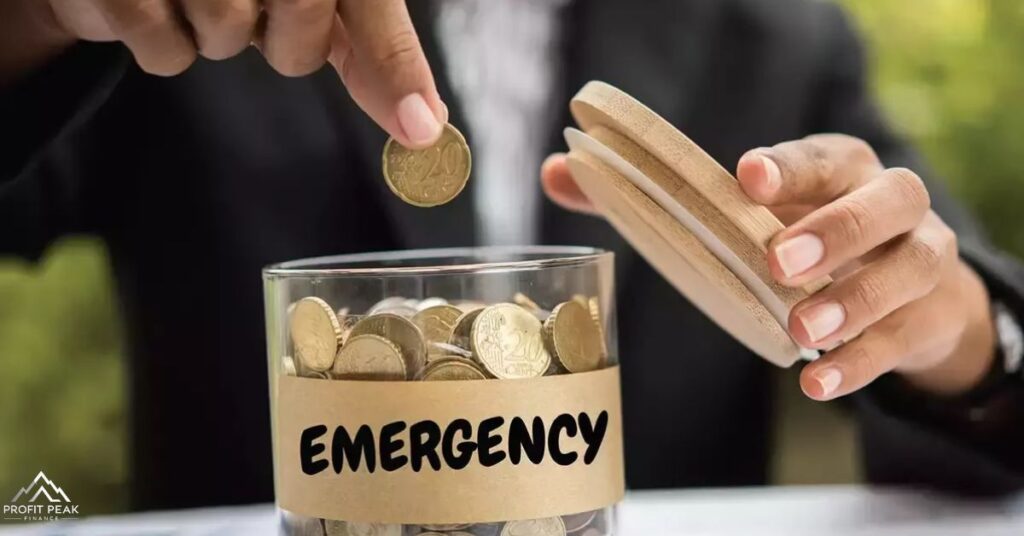Want to build an unshakable economic future? all of it starts off evolving with a rock-stable basis. Just like constructing a skyscraper, neglecting that vital base will cause your monetary plans to fall apart.
So what’s that make-or-destroy first constructing block of private finance mastery? The answer is straightforward yet powerful: an emergency fund.
The Essence of an Emergency Fund
At its core, an emergency fund is a stockpile of cash reserves set aside to cover any unpredictable prices or earnings losses that existence can also throw at you. It’s a monetary lifestyle jacket, a security blanket for when matters cross sideways. And in trendy turbulent internationals, having this type of protection net is greater critical than ever.
The numbers do not lie – a marvelous forty% of American citizens can’t have enough money in a $1,000 emergency without sliding into crippling debt or depleting their long-time period investments. That’s a terrifying statistic, one that highlights the essential function an emergency fund plays in attaining real monetary stability.
Why It’s Worth Every Penny
Sure, socking money away for a rainy day may not seem glamorous. But having a robust emergency fund is the anti-anxiety medication for your personal finances. It provides a reassuring safety net that pays dividends in three key areas:
- avoiding high priced Debt:
While the water heater explosively dies or the automobile wishes to marvel surgical procedure, that emergency coins means you won’t have to lodge predatory payday loans or max out high-hobby credit score playing cards simply to live afloat. preventing that poisonous debt cycle is priceless.
- doing away with stress & tension:
There is a top notch peace of thoughts that includes knowing you could with ease cover those inevitable curveballs lifestyle throws without absolutely derailing your budget or fashionable dwelling. No greater sleepless nights disturbing approximately the next disaster!
- keeping long-term desires on target:
Maximum folks have dreams of homeownership, a cushy retirement, or leaving an inheritance. However one unforeseen incident can quickly use up the price range earmarked for those critical goals in case you’re no longer organized. The emergency fund acts as a protection, insulating your future plans from present turbulence.
Simply put, having an emergency cushion is the first step toward achieving true financial freedom and security. But how much should you actually save for this vital safety net?
Sizing Up Your Emergency Needs

The general rule of thumb is to have enough socked away to cover 3-6 months’ worth of essential living expenses. This includes:
- Rent/Mortgage Payment
- Utilities (Electric, Water, Gas, etc.)
- Transportation Costs
- Groceries & Household Items
- Minimum Debt Payments
- Other Necessities
To calculate your individualized target emergency fund amount, simply track your monthly spending on those key categories for a few months. Let’s say your total comes out to $3,500/month. Based on the 3-6 month guideline, your ideal emergency fund range would be $10,500 to $21,000.
- If you’re a dual-income household, having just 3 months’ expenses covered may suffice if you can temporarily rely on the other income stream.
- Dual self-employment or commissioned roles? You may want 6-12 months’worth given the less predictable income flows.
- Have dependents or high medical costs? It’s wise to be on the higher end of the range or beyond.
- Stable job with high job security? You could potentially start on the lower end, like 3 months’ worth.
The key is running the numbers to gauge an appropriate target based on your unique situation and potential risks.
Read This: WARSHIPS WITH THREE BANKS OF ROWERS: A COMPREHENSIVE GUIDE
Getting the Fund Fully-Loaded
With that target emergency stash calculated, it’s time to start building it up through consistent and persistent saving. Even modest routines like automatically transferring $25-50 from each paycheck can yield fast results.
| Amount Saved Per Month | Time to $10,000 Emergency Fund |
| $25 | 33 years |
| $50 | 16.5 years |
| $100 | 8.5 years |
| $200 | 4 years |
That said, routinely stashing away $200+ may not be feasible for everyone initially. In those cases, exploring temporary boosts like slashing excessive expenses, generating side income, or allocating tax refunds can provide an extra turbo-charge.
The finish line may still seem distant. But staying focused on hitting progressive micro-goals ($500 by summer, $2,000 this year) keeps you motivated without feeling overwhelmed by the bigger total.
The Ideal Emergency Fund Location
Once you’ve built up that cash stockpile through disciplined saving, where should you actually keep this emergency fund? After all, accessibility and growth potential both matter for this money.
The optimal account option walks a fine line between being liquid enough for penalty-free withdrawals while still earning a respectable return. Typically, high-yield savings accounts or money market accounts fit that profile perfectly by providing:
- FDIC Insurance: Protecting your capital up to $250,000 in deposits
- Higher Interest Rates: 2-3% APY returns that outpace traditional savings
- Easy Access: Quick, fee-free transfers or withdrawals as needed
- Safety: No risk of loss like stock market-linked investments
CDs (certificates of deposit) can also work for at least part of your emergency fund, providing slightly higher rates in exchange for less liquidity until the maturity date. Just avoid tying up your full fund in long CD terms that would incur costly early withdrawal penalties.
Wherever you house your emergency reserves, the key is keeping them separate from daily transaction accounts to prevent accidentally draining the fund. Clearly label it with the purpose and treat it as absolutely untouchable except for legitimate emergencies.
Mastering the Emergency Fund Mindset

Successfully creating (and maintaining) a proper emergency fund requires the right mental framing. All too often, that cash ends up getting gradually picked apart for splurges or unnecessary wants until the well suddenly runs dry when a legitimate crisis arises.
To prevent this, you must firmly cement an “emergency fund” mindset, one of treating this cash as strictly off-limits except for its intended purpose. It’s not surplus fun money; it’s an insurance policy protecting your overall financial health and future.
So when an emergency inevitably occurs, pull from the fund freely – but with the expectation of replenishing it back to its full level once that storm passes and revenues stabilize again. Just like an insurance deductible!
Developing this psychological discipline around your emergency reserves is perhaps the toughest part. But putting in that mental work provides immense peace of mind, knowing you have the first pillar of a sound financial plan solidly in place.
Read Also This: CAYMAN ISLANDS BANK CD RATES
The First Brick on the Road to Success
In the world of personal finance, there are few priorities more foundational than establishing a dedicated emergency fund. It’s the brick that everything else gets built upon – investing, debt elimination, retirement planning, you name it.
By proactively constructing this vital safety net, you’ll be fortifying your financial stability and opening the door to achieving all your loftier money goals and dreams. While it requires some upfront sacrifice, the rewards of reduced anxiety, avoided debt catastrophes, and unshakable financial security make it more than worth the effort.
So if you’re ready to start laying the groundwork for your own financial empire, take stock of your current emergency reserves today. Even small, consistent savings commitments can yield big results over time through the power of compound growth. The path to financial success starts with this first critical step – will you take it?
CONCLUSION
An emergency fund is universally considered the critical first foundation of personal finance mastery. Having a cash reserve of 3-6 months’ worth of living expenses allows you to weather any unexpected expenses or income disruptions without being forced into high-interest debt or derailing long-term financial goals.
Building this emergency safety net provides invaluable benefits like eliminating money stress, protecting your retirement savings from premature raids, and ensuring you can consistently make progress on wealth accumulation instead of treading water. While it requires discipline to consistently save until hitting your specific emergency fund target amount, treating it as your highest priority lays the groundwork for true financial security and success.
Without this essential first foundation firmly in place, your entire personal finance plan is akin to a house of cards that can come crashing down at the first sign of turbulence. An emergency fund gives you stability, security, and the supreme confidence to continue pursuing audacious money goals knowing you’re covered when curveballs inevitably get thrown your way. Master this step, and you’ll have the bedrock in place to then build out a prosperous financial future.











